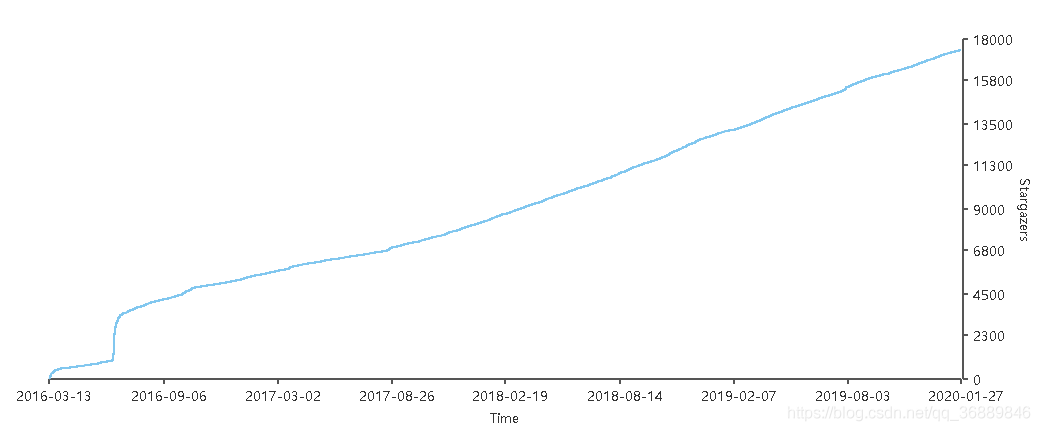详解Golang Iris框架的基本使用
来源:脚本之家
时间:2022-12-30 08:33:02 476浏览 收藏
在Golang实战开发的过程中,我们经常会遇到一些这样那样的问题,然后要卡好半天,等问题解决了才发现原来一些细节知识点还是没有掌握好。今天golang学习网就整理分享《详解Golang Iris框架的基本使用》,聊聊框架、Iris,希望可以帮助到正在努力赚钱的你。
Iris介绍
编写一次并在任何地方以最小的机器功率运行,如Android、ios、Linux和Windows等。它支持Google Go,只需一个可执行的服务即可在所有平台。 Iris以简单而强大的api而闻名。 除了Iris为您提供的低级访问权限。 Iris同样擅长MVC。 它是唯一一个拥有MVC架构模式丰富支持的Go Web框架,性能成本接近于零。 Iris为您提供构建面向服务的应用程序的结构。 用Iris构建微服务很容易。
1. Iris框架
1.1 Golang框架
Golang常用框架有:Gin、Iris、Beego、Buffalo、Echo、Revel,其中Gin、Beego和Iris较为流行。Iris是目前流行Golang框架中唯一提供MVC支持(实际上Iris使用MVC性能会略有下降)的框架,并且支持依赖注入,使用入门简单,能够快速构建Web后端,也是目前几个框架中发展最快的,从2016年截止至目前总共有17.4k stars(Gin 35K stars)。
Iris is a fast, simple yet fully featured and very efficient web framework for Go. It provides a beautifully expressive and easy to use foundation for your next website or API.

1.2 安装Iris
Iris官网:https://iris-go.com/
Iris Github:https://github.com/kataras/iris
# go get -u -v 获取包 go get github.com/kataras/iris/v12@latest # 可能提示@latest是错误,如果版本大于11,可以使用下面打开GO111MODULE选项 # 使用完最好关闭,否则编译可能出错 go env -w GO111MODULE=on # go get失败可以更改代理 go env -w GOPROXY=https://goproxy.cn,direct
2. 使用Iris构建服务端
2.1 简单例子1——直接返回消息
package main
import (
"github.com/kataras/iris/v12"
"github.com/kataras/iris/v12/middleware/logger"
"github.com/kataras/iris/v12/middleware/recover"
)
func main() {
app := iris.New()
app.Logger().SetLevel("debug")
// 设置recover从panics恢复,设置log记录
app.Use(recover.New())
app.Use(logger.New())
app.Handle("GET", "/", func(ctx iris.Context) {
ctx.HTML("<h1>Hello Iris!</h1>")
})
app.Handle("GET", "/getjson", func(ctx iris.Context) {
ctx.JSON(iris.Map{"message": "your msg"})
})
app.Run(iris.Addr("localhost:8080"))
}
其他便捷设置方法:
// 默认设置日志和panic处理 app := iris.Default()
我们可以看到iris.Default()的源码:
// 注:默认设置"./view"为html view engine目录
func Default() *Application {
app := New()
app.Use(recover.New())
app.Use(requestLogger.New())
app.defaultMode = true
return app
}
2.2 简单例子2——使用HTML模板
package main
import "github.com/kataras/iris/v12"
func main() {
app := iris.New()
// 注册模板在work目录的views文件夹
app.RegisterView(iris.HTML("./views", ".html"))
app.Get("/", func(ctx iris.Context) {
// 设置模板中"message"的参数值
ctx.ViewData("message", "Hello world!")
// 加载模板
ctx.View("hello.html")
})
app.Run(iris.Addr("localhost:8080"))
}
上述例子使用的hello.html模板
<title>Hello Page</title><h1>{{ .message }}</h1>
2.3 路由处理
上述例子中路由处理,可以使用下面简单替换,分别针对HTTP中的各种方法
app.Get("/someGet", getting)
app.Post("/somePost", posting)
app.Put("/somePut", putting)
app.Delete("/someDelete", deleting)
app.Patch("/somePatch", patching)
app.Head("/someHead", head)
app.Options("/someOptions", options)
例如,使用路由“/hello”的Get路径
app.Get("/hello", handlerHello)
func handlerHello(ctx iris.Context) {
ctx.WriteString("Hello")
}
// 等价于下面
app.Get("/hello", func(ctx iris.Context) {
ctx.WriteString("Hello")
})
2.4 使用中间件
app.Use(myMiddleware)
func myMiddleware(ctx iris.Context) {
ctx.Application().Logger().Infof("Runs before %s", ctx.Path())
ctx.Next()
}
2.5 使用文件记录日志
整个Application使用文件记录
上述记录日志
// 获取当前时间
now := time.Now().Format("20060102") + ".log"
// 打开文件,如果不存在创建,如果存在追加文件尾,权限为:拥有者可读可写
file, err := os.OpenFile(now, os.O_CREATE | os.O_APPEND, 0600)
defer file.Close()
if err != nil {
app.Logger().Errorf("Log file not found")
}
// 设置日志输出为文件
app.Logger().SetOutput(file)
到文件可以和中间件结合,以控制不必要的调试信息记录到文件
func myMiddleware(ctx iris.Context) {
now := time.Now().Format("20060102") + ".log"
file, err := os.OpenFile(now, os.O_CREATE | os.O_APPEND, 0600)
defer file.Close()
if err != nil {
ctx.Application().Logger().SetOutput(file).Errorf("Log file not found")
os.Exit(-1)
}
ctx.Application().Logger().SetOutput(file).Infof("Runs before %s", ctx.Path())
ctx.Next()
}
上述方法只能打印Statuscode为200的路由请求,如果想要打印其他状态码请求,需要另使用
app.OnErrorCode(iris.StatusNotFound, func(ctx iris.Context) {
now := time.Now().Format("20060102") + ".log"
file, err := os.OpenFile(now, os.O_CREATE | os.O_APPEND, 0600)
defer file.Close()
if err != nil {
ctx.Application().Logger().SetOutput(file).Errorf("Log file not found")
os.Exit(-1)
}
ctx.Application().Logger().SetOutput(file).Infof("404")
ctx.WriteString("404 not found")
})
Iris有十分强大的路由处理程序,你能够按照十分灵活的语法设置路由路径,并且如果没有涉及正则表达式,Iris会计算其需求预先编译索引,用十分小的性能消耗来完成路由处理。
注:ctx.Params()和ctx.Values()是不同的,下面是官网给出的解释:
Path parameter's values can be retrieved from ctx.Params()Context's local storage that can be used to communicate between handlers and middleware(s) can be stored to ctx.Values() .
Iris可以使用的参数类型
| Param Type | Go Type | Validation | Retrieve Helper |
|---|---|---|---|
| :string | string | anything (single path segment) | Params().Get |
| :int | int | -9223372036854775808 to 9223372036854775807 (x64) or -2147483648 to 2147483647 (x32), depends on the host arch | Params().GetInt |
| :int8 | int8 | -128 to 127 | Params().GetInt8 |
| :int16 | int16 | -32768 to 32767 | Params().GetInt16 |
| :int32 | int32 | -2147483648 to 2147483647 | Params().GetInt32 |
| :int64 | int64 | -9223372036854775808 to 92233720368?4775807 | Params().GetInt64 |
| :uint | uint | 0 to 18446744073709551615 (x64) or 0 to 4294967295 (x32), depends on the host arch | Params().GetUint |
| :uint8 | uint8 | 0 to 255 | Params().GetUint8 |
| :uint16 | uint16 | 0 to 65535 | Params().GetUint16 |
| :uint32 | uint32 | 0 to 4294967295 | Params().GetUint32 |
| :uint64 | uint64 | 0 to 18446744073709551615 | Params().GetUint64 |
| :bool | bool | “1” or “t” or “T” or “TRUE” or “true” or “True” or “0” or “f” or “F” or “FALSE” or “false” or “False” | Params().GetBool |
| :alphabetical | string | lowercase or uppercase letters | Params().Get |
| :file | string | lowercase or uppercase letters, numbers, underscore (_), dash (-), point (.) and no spaces or other special characters that are not valid for filenames | Params().Get |
| :path | string | anything, can be separated by slashes (path segments) but should be the last part of the route path | Params().Get |
在路径中使用参数
app.Get("/users/{id:uint64}", func(ctx iris.Context){
id := ctx.Params().GetUint64Default("id", 0)
})
使用post传递参数
app.Post("/login", func(ctx iris.Context) {
username := ctx.FormValue("username")
password := ctx.FormValue("password")
ctx.JSON(iris.Map{
"Username": username,
"Password": password,
})
})
文中关于golang的知识介绍,希望对你的学习有所帮助!若是受益匪浅,那就动动鼠标收藏这篇《详解Golang Iris框架的基本使用》文章吧,也可关注golang学习网公众号了解相关技术文章。
-
354 收藏
-
244 收藏
-
134 收藏
-
313 收藏
-
203 收藏
-
158 收藏
-
267 收藏
-
156 收藏
-
461 收藏
-
499 收藏
-
375 收藏
-
393 收藏
-
211 收藏
-
326 收藏
-
188 收藏
-
132 收藏
-
235 收藏
-

- 前端进阶之JavaScript设计模式
- 设计模式是开发人员在软件开发过程中面临一般问题时的解决方案,代表了最佳的实践。本课程的主打内容包括JS常见设计模式以及具体应用场景,打造一站式知识长龙服务,适合有JS基础的同学学习。
- 立即学习 543次学习
-

- GO语言核心编程课程
- 本课程采用真实案例,全面具体可落地,从理论到实践,一步一步将GO核心编程技术、编程思想、底层实现融会贯通,使学习者贴近时代脉搏,做IT互联网时代的弄潮儿。
- 立即学习 516次学习
-

- 简单聊聊mysql8与网络通信
- 如有问题加微信:Le-studyg;在课程中,我们将首先介绍MySQL8的新特性,包括性能优化、安全增强、新数据类型等,帮助学生快速熟悉MySQL8的最新功能。接着,我们将深入解析MySQL的网络通信机制,包括协议、连接管理、数据传输等,让
- 立即学习 500次学习
-

- JavaScript正则表达式基础与实战
- 在任何一门编程语言中,正则表达式,都是一项重要的知识,它提供了高效的字符串匹配与捕获机制,可以极大的简化程序设计。
- 立即学习 487次学习
-

- 从零制作响应式网站—Grid布局
- 本系列教程将展示从零制作一个假想的网络科技公司官网,分为导航,轮播,关于我们,成功案例,服务流程,团队介绍,数据部分,公司动态,底部信息等内容区块。网站整体采用CSSGrid布局,支持响应式,有流畅过渡和展现动画。
- 立即学习 485次学习
